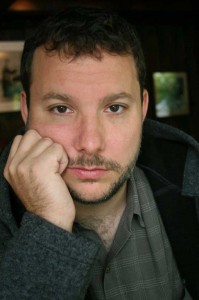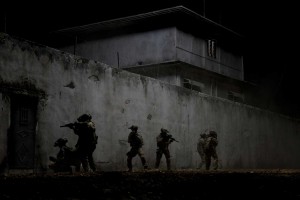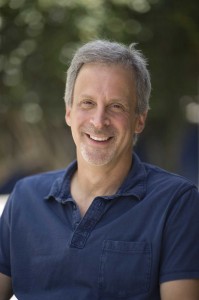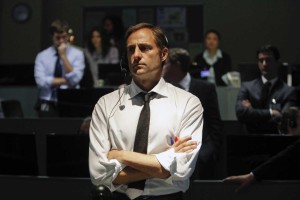
Director Kathryn Bigelow‘s Zero Dark Thirty has been described by its writer/producer Mark Boal as “living history.” An ongoing story peopled with characters based on actual CIA agents whose identities have been changed, the film traces the manhunt for Osama Bin Laden. “This is something that is fresh in peoples’ minds,” said editor Dylan Tichenor. “You really wanted to make sure it was respectful to everybody and everything. We were careful to keep it as real as possible. It would be wrong to do it any other way.”
The production shot with four to seven ARRI Alexa cameras each day, so editorial received “mountains of footage” from the digital lab. “Everyone was prepared for a lot of footage, but I don’t think anyone was prepared for exactly how much footage,” said Tichenor. “Seven hours a day is basically what we were getting.” The typical editorial day turned into six or seven hours of dailies and four or five hours of cutting every day, including Saturday and Sunday. The crew’s day off was a day that editorial used to catch-up.

Shot in documentary style, Tichenor looked for moments that best told the story and highlighted the characters in interesting ways. Bigelow came into the cutting room in India a few times with Boal to make sure they had the Islamabad section, but had little time during the 14-week production to focus on the editing. It was during the tight five-month, cappuccino-fueled post that the film took shape.
Laid out chronologically, and using various terrorist attacks as a way to mark time, the suspense in the film often comes from knowledge that the audience knows how these events transpired. The viewers watch characters, who without the benefit of hindsight, are desperately trying to find the Al Qaeda mastermind and making choices, which often turn out badly. Along with chapter markers and actual newscasts, this device progresses the narrative over the story’s decade-long manhunt, as it hammers home the reality.

“It was one of my favorite parts of the script, and something I pushed a lot for, to make sure we had all those global things that happened because that is the audiences’ connection,” revealed editor William Goldenberg. “We have no idea what the CIA and Maya were going through, but we do know all these events that happened.” This made for a structure that went from big, large-scale events down to the intelligence operatives’ personal moments – the “macro to the micro.”
Goldenberg came onto the picture in the middle of June, at the end of shooting, when the company returned to the U.S. At the time, Tichenor had an assembly – a little over three hours of footage – excluding a few bits shot in London and the last sequence, which was the raid. Dailies were still coming in when Goldenberg began cutting the raid.
The editors relied heavily on their crew, which consisted of four assistants, a visual effects editor and a production assistant. Tichenor explains that his process changed on this film, “My normal thing is to watch dailies, take very detailed notes, and then I go through and build selects. On this movie I would build selects on key scenes and then I had my crew building the selects from my notes on a lot of other scenes because there was no way to do it otherwise.”

The biggest creative challenge of the film was keeping it real without making it sensationalized. “Whether that meant not having music, or presenting scenes in a certain way, there was always a focus to make this a real compelling story without sensationalizing it; doing it in a way that was not typical Hollywood, such as big action scenes with lots of music,” explained Tichenor. “Certainly in the raid the tension was meant to come from reality and the specificity of the details.”
With the focus of the film on the authenticity of the manhunt while keeping the journalistic storytelling as true as possible, Bigelow involved Boal in the shaping of the film, including decisions as to which scenes needed to be pared down or even lost in the edit. The team had to streamline the movie without losing the sense of how difficult this “needle-in-a-haystack” hunt actually was. Tichenor found Boal was the best kind of producer, one who could sit back and look at the picture as a whole.
“Certain sequences were lifted out right away,” Tichenor said. “Then you make each scene the best that it can be to see if it belongs in the movie. We went through that process until we had a movie where every scene was doing what it was supposed to be doing. Then you go through and figure out how we tell the story in a more efficient way. How do we highlight these character moments? What do we take out? What do we add back in?”
Boal was normally very solemn during screenings, never letting the editors know what he was thinking. “There was one screening when he jumped up at the end with a big smile on his face and hugged everybody,” said Tichenor. “We knew at that moment he felt that the movie was working.”





